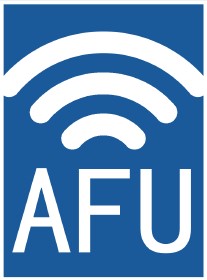A pico repeater is a device used to enhance the coverage of mobile communication signals. Its core function is to receive weak signals from base stations, process them through low-noise amplification, filtering, and power amplification, and then retransmit them to signal-weak areas. This solves the problems of signal blind spots, weak signal areas, and interference areas. Importantly, it does not have the ability to generate signals on its own (relying on base station signals). The coverage range of a single unit is usually several tens to several hundreds of meters, and its output power is mostly below 1W (up to 5W in some scenarios). It features a small size and flexible installation.
I. Core Performance
Coverage Capability: The coverage radius is usually 50-300 meters, depending on the environment (such as indoor wall density and outdoor obstacles). It is suitable for small-scale blind spot compensation (e.g., a single building, small shops).
Signal Gain: The gain at the receiving end is approximately 50-80dB, and the gain at the retransmitting end is about 60-90dB, which can effectively amplify weak signals. However, the gain must be precisely controlled (to avoid interfering with the base station).
Bandwidth and Standards: It supports mainstream mobile communication standards, such as 4G (LTE) and 5G (NR), and some models are compatible with 2G/3G. The bandwidth matches the frequency bands of operators.
Noise Control: Equipped with a Low-Noise Amplifier (LNA), the uplink noise figure is usually ≤ 3dB, which can reduce interference to the base station and prevent impacts on the stability of the entire communication network.
Installation and Power Consumption: It has a compact size (similar to a home router) and supports wall-mounted or desktop installation. It has low power consumption (usually 10-30W) and does not require separate wiring (some models can be powered via PoE).
II. Practical Applications
Indoor Blind Spot Compensation Scenarios
Solving No Signal in Elevators: Small repeaters are installed in elevator shafts to cover elevator cabs, preventing call drops and data lag.
Improving Weak Signals in High-Rise Buildings/Basements: In high-rise residential buildings, issues may arise from interference caused by overly strong signals, while in basements, signals cannot penetrate. After installing a repeater, the call connection rate and network speed can be improved.
Outdoor Small-Scale Coverage
Blind Spot Compensation in Suburbs/Rural Areas: Some remote villages are far from base stations, resulting in weak signals. A single pico repeater can cover the entire village, meeting basic call needs and 4G/5G internet access requirements.
Temporary Scene Coverage: For scenarios like outdoor exhibitions and construction sites that require short-term signal coverage, there is no need to build a base station; installing a repeater allows for quick deployment and use.
Special Scene Optimization
Underground Malls/Parking Lots: Due to thick walls and heavy obstacles, base station signals cannot penetrate. Repeaters receive outdoor signals and then cover the underground areas.
Tunnels/Underpasses: There are signal blind spots in traffic tunnels. Installing pico repeaters ensures smooth communication (such as emergency calls) when vehicles pass through.

